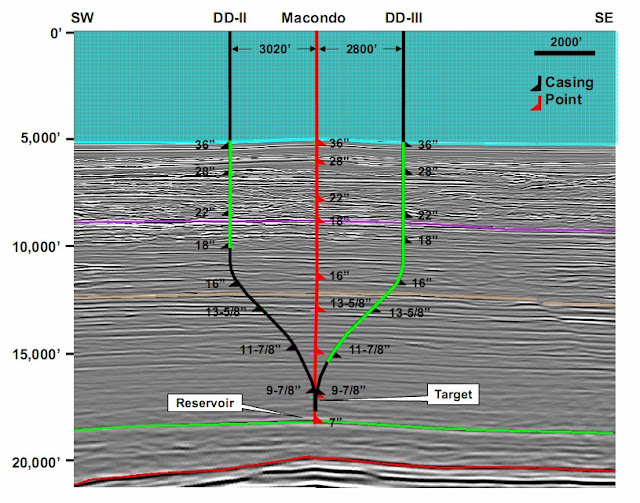Update for Deepwater Horizon Oil Containment and Relief Wells
The US EPA has absurd rules for water purification in circumstances such as the Macondo spill -- requiring any water replaced in the Gulf to be 99.999% pure. 99% pure is not good enough, even if the intake water was only 70% pure. Calling the US government insane in such circumstances is to be too kind. And a 1920 federal law, the Jones Act, has been a large impediment to allowing foreign nations to assist the US cleanup efforts. The Jones Act is a sop to labour unions that the Obama Pelosi regime cannot afford to dispense with -- even if it means $ billions of unnecessary damage and untold hardship.
We're currently collecting at a rate of about 24,000 barrels a day, so roughly 1,000 barrels an hour. What I would say is this is progressing well. The equipment is operating very efficiently, very effectively and we always just need this to keep this in contact if it's not collecting all the oil and we're determined to find ways to do that. __Kent Wells Tech Update PDF
Rough weather in the Gulf has forced a delay in the plan to add the Helix Producer to the containment effort. The Helix Producer would collect an additional 20,000 + barrels per day from the BOP. It will take roughly a week for the storm waves to subside enough to complete the 3 additional days of work necessary to add the Helix Producer to the team.
Now in the meantime we will continue to be collecting from the enterprise and the Q4000, so we'll continue to collect the 24,000 barrels a day. We believe both those vessels should be able handle these sea states and so the way I would summarize this is the sea states that we'll see will not impact our ability to continue on with the subsea containment we have now. It will not impact the drilling of the relief wells.
The only thing it will do is it will cause a delay of about six days, whatever the weather is of bringing the next phase of subsea containment online. __Kent Wells Update PDF
The above image illustrates the total containment effort including the Helix Producer with its floating riser, and the two relief wells.
So I think if I talk in terms of the first relief well being drilled by the DD3. we're currently at a measured depth of 16,770 feet. The well is progressing very well. We've made three ranging runs and I'll talk a little bit about that in a minute but we're now roughly in sight on a horizontal plane about 20 feet from the existing Macondo well.
Now it's important to remember we still have another roughly 1,000 feet to be drilled vertically but we're getting very close. And so this is what I want people to realize. So we started the well at the surface some 2,800 feet away from the well. And we've now got to within 20 feet of it. And we will start what we call paralleling the well.
So we will be drilling vertically right down beside of a constant ranging so we know precisely where we are. __Kent Wells Update PDF
Go to this Kent Wells video with animation for a good view of the relief well ranging efforts to line up the relief well with the original well, for the purpose of entering the well and killing the oil flow permanently.
More on the Helix Producer here, and here.
Short report on a new, larger LMRP cap capable of completely containing all oil flow, which might be installed by mid-July. Remember that the relief wells are scheduled to intersect the original well bore sometime in early August.
This Kent Wells video presents an inside look at the relief well team operations on-site
Observation of the live cam at the wellhead demonstrates a fluctuation in oil spillage around the LMRP cap. But in general the spillage flow has been significantly down from the first week or so after cap placement. After the Helix Producer is successfully added to the effort, it is unlikely that very much oil -- relatively speaking -- will spill around the cap -- even the smaller cap which is currently in place.
Below is an overflight of the surface containment effort on 29 June 2010, along with shots of some oil slicks far offshore.
Labels: Oil Spills























